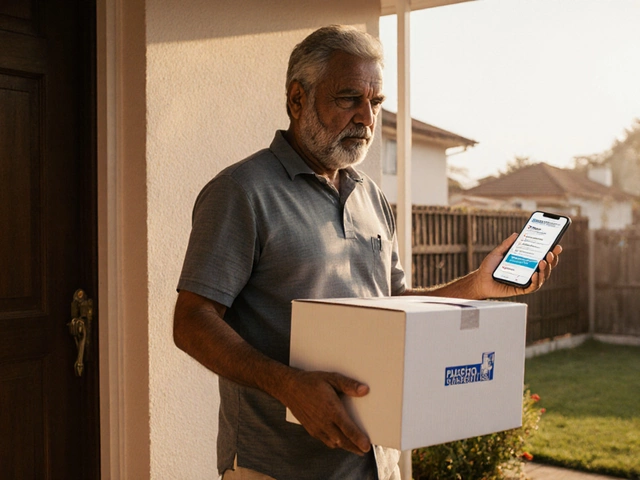
Ask anyone facing cancer—stages aren’t just labels. They spell out the fight ahead. Maybe your doctor tossed out the term “stage 3” or “stage 4” and your stomach dropped, but what’s the real difference? Getting past the medical talk matters. The gap between these two stages can mean a world of difference for treatment plans, how much the cancer has spread, and what life looks like going forward.
Stage 3 usually means the cancer's still in the original area but it might have reached nearby lymph nodes. With stage 4, the cancer has moved—maybe even landing in a new organ. This jump changes the options and the outlook. It’s not about giving up—it’s about knowing the facts, asking questions, and figuring out what can still be done. Trust me, learning the details now makes every decision a bit less overwhelming.
- What Do Cancer Stages Really Mean?
- Stage 3: The Battle Field
- Stage 4: When Cancer Spreads
- Treatment Differences and Expectations
- Coping and Support: What Helps Most?
- Hope, Facts, and Taking Action
What Do Cancer Stages Really Mean?
The word "stage" is a loaded one in cancer. It tells you how far the disease has spread and if it’s sticking close to home or moving around the body. Doctors use cancer stages to pick the right treatment, compare outcomes, and, most importantly, plan what happens next. Hearing "you’re stage 3" or "stage 4" means totally different things, both in reality and emotionally.
Most cancer types use numbers from 0 to 4. The higher the number, the further the cancer has gone from where it started. Here’s the basic breakdown:
- Stage 3 cancer usually means a large tumor or that the cancer has spread to nearby lymph nodes, but it hasn’t yet traveled far across the body.
- Stage 4 is when the cancer has left its original spot and made itself at home in another organ—sometimes the lungs, bones, liver, or even the brain. This is called “metastatic” cancer.
Why does this matter? Because the stage decides almost everything—how aggressive doctors get, what tools they use, and what everyday life looks like during treatment. For example, people with stage 3 cancer can sometimes get surgery to take it out. With stage 4, surgery might help certain symptoms, but the main focus usually shifts to shrinking or slowing things down.
Check out these numbers for a clearer picture on how survival rates stack up depending on stage (for most common solid tumors):
| Stage | 5-Year Survival Rate (%) |
|---|---|
| Stage 3 | 40-70 |
| Stage 4 | 10-20 |
See how big that drop is? That’s why nailing down the stage early can make a difference. Still, nobody should ever think stage 4 means no hope. Treatments are always changing, and people do beat the odds every day.
Stage 3: The Battle Field
When doctors talk about stage 3 cancer, they mean the tumor is bigger or has pushed into tissues close by. It often means cancer cells have invaded nearby lymph nodes, but haven’t moved far away. This stage can feel like ground zero for battling cancer—it’s a make-or-break zone.
Treatment for stage 3 isn't one-size-fits-all. Your medical team might go for surgery first, or suggest chemo and radiation before or after. Sometimes it’s a combo—like “chemoradiation”—or adding pills that help the immune system. The type of cancer plays a huge part in what comes next. For example, stage 3 breast cancer isn’t treated exactly like stage 3 lung cancer. So you end up with a plan that’s tailored to the particular situation.
The tough news? Stage 3 is serious, but it’s still considered potentially curable for many types of cancer. Oncologists often go after it aggressively. That means lots of appointments, tests, and sometimes a rollercoaster of side effects. The upside: there’s usually a clear game plan, and if the cancer hasn’t spread far, the chances of beating it are higher than at stage 4.
- Survival rates are better than stage 4, but depend a lot on the cancer type and where it is.
- Treatments can last months and may mix hospital visits with at-home meds.
- Doctors check lymph nodes through scans or surgery, since those are key in determining if the cancer has spread.
| Cancer Type | Approx. 5-Year Survival Rate (Stage 3) |
|---|---|
| Breast | 72% |
| Colon | 71% |
| Lung | 36% |
You'll see a lot of people focused on "staying on schedule"—getting to chemo, following up with scans, even keeping a journal of side effects. It all helps stick to the plan. If you or someone you love is in this fight, don’t go it alone—bring questions to every visit and keep notes. Your care team wants you tuned in and ready. The goal with stage 3? Knock back the cancer before it moves and keep it from coming back.
Stage 4: When Cancer Spreads
Here’s where things get serious. Stage 4 cancer means the cancer has left its original spot and traveled somewhere else in the body. Doctors call this metastasis. The places cancer usually spreads to—think liver, lungs, bones, or brain—depend on where it started.
The reason stage 4 cancer is such a big deal? Treating it gets way tougher. Treatments might still slow it down, but the main goal often shifts from cure to control and keeping you feeling as good as possible. If you’re looking up stats, you’ll notice that survival rates drop at stage 4 for almost every type of cancer. Take breast cancer, for example: While early stages might have a five-year survival rate of over 90%, stage 4 can dip below 30%.
| Cancer Type | 5-Year Survival at Stage 4 |
|---|---|
| Breast | 28% |
| Lung | 8% |
| Colon | 14% |
This doesn’t mean hope is lost. Lots of new treatments—like immunotherapy and targeted drugs—help some folks live much longer now than they would have ten years ago. But you can expect things like:
- More doctor visits
- More types of medicine or combination treatments
- Dealing with side effects from treatments
- Support not just from oncology teams, but palliative care doctors—whose whole job is to keep you comfortable and tackle pain or nausea
What matters most about stage 4? It’s okay to ask your doctor straight-up: What can I hope for now? It’s about finding the right balance between living longer and living better. And you’re always allowed to ask for a second opinion.

Treatment Differences and Expectations
Stage 3 and stage 4 cancer don’t just mean different levels of seriousness—they shape every move doctors make next. With stage 3 cancer, treatment is usually aggressive because there’s still a real chance to remove or destroy all signs of cancer. You’ll hear about surgery, chemo, and radiation (often some mix of the three). Sometimes doctors throw immunotherapy or targeted therapy into the mix, especially if the tumor has certain genes. The big goal at this stage? Hit hard and aim for a cure, or at least long-term control.
Stage 4 is a different beast. By this point, the cancer has set up shop in other organs—think spots on the lungs, liver, or bones. Doctors usually say "metastatic" here. Surgery isn’t often an option (except for small spots), so the focus pivots to treatments that work through the whole body. These include chemotherapy, targeted therapies, hormone blockers for certain cancers, or newer immune-based medicines that teach the body to fight back. The main goal isn’t a cure—it's slowing things down, easing symptoms, and giving people solid quality of life.
Here’s what those differences boil down to in practice:
- Stage 3: Treatment usually comes in a series of steps. Surgery to take out tumors, then chemo or radiation to mop up what’s left.
- Stage 4: Fewer surgeries. Treatments often happen at the same time, and “maintenance” therapy is pretty common—ongoing meds to hold the cancer in check.
- Expect more doctor visits and scans for both stages, but plans and schedules get more flexible in stage 4 to fit the patient’s energy and lifestyle.
- Doctors often talk about “responders”—people who do really well for a long time on certain meds, especially in some stage 4 cases. That gives legit hope.
If you like numbers, take a look at this example breakdown for five-year survival rates by stage for a common cancer like colorectal (from the American Cancer Society):
| Stage | 5-Year Relative Survival Rate |
|---|---|
| Stage 3 | 53% |
| Stage 4 | 15% |
These numbers bounce around depending on the specific cancer, age, and other health stuff. But the takeaway doesn’t change: Stage 4 means a tougher road, but it’s far from hopeless. People still respond, and new treatments keep rolling out. If you or someone you love hears “stage 3” or “stage 4,” keep asking the doctors direct questions about goals, possible side effects, and what you can do day-to-day to keep feeling like yourself.
Coping and Support: What Helps Most?
Dealing with a stage 4 cancer diagnosis (or stage 3, for that matter) is way more than medical appointments and test results. Daily life takes a hit, your emotions swing all over the place, and stress goes through the roof. No one handles this stuff perfectly, but support makes a real difference. According to the American Cancer Society, people who feel supported—by family, friends, or even a community group—often report less stress and feel more in control.
A cancer diagnosis can be life-changing—not just for the person, but for the whole family. Support doesn’t cure cancer, but it helps people cope and find their strength again. — American Cancer Society
If that sounds easy on paper but tough to do in real life, you’re not alone. Here’s what actually seems to help:
- Talk it out: Don’t bottle it all up. Whether it’s a chat with your best friend, a support group, or a pro—the simple act of talking can lower anxiety. Many hospitals even have social workers or cancer navigators trained for this.
- Stay active (if you can): Physical activity—even a short walk—can help boost mood and fight fatigue. Don’t push if you’re wiped out, but movement matters. Researchers at UCLA found that regular light exercise reduced depression in people with advanced cancer.
- Use technology: Video calls, cancer apps, and online support groups make it easier to share what’s going on, especially if you’re stuck at home. The Cancer Support Community has free virtual meetups for patients and caregivers.
- Lean on practical help: Accept help with meals, rides, or errands. It saves energy for stuff that matters most.
- Ask questions: Don’t settle for answers that leave you confused. Doctors and nurses expect questions—you’re not being difficult by asking what’s next, what your options are, or how side effects are managed.
Check out this quick snapshot—survey data from the National Cancer Institute showed what support people find most helpful:
| Type of Support | % Who Found it Most Useful |
|---|---|
| Family & friends | 68% |
| Support groups | 51% |
| Professional counseling | 37% |
| Online resources | 29% |
One thing that really stands out? There’s no single right way to cope. If something doesn’t help, skip it and move on. Staying open to new things—like mindfulness or journaling—can sometimes make things feel just a little less heavy.
Hope, Facts, and Taking Action
Getting a stage 3 cancer or stage 4 diagnosis can feel like a punch to the gut. But here’s something real—people beat the odds every day, and there’s more that can be done than you might think. The numbers are tough. For example, five-year survival rates depend on cancer type and stage. According to U.S. data, here’s what you might see:
| Cancer Type | Stage 3 Survival Rate | Stage 4 Survival Rate |
|---|---|---|
| Breast | ~72% | ~30% |
| Colon | ~71% | ~15% |
| Lung | ~25% | ~7% |
Stats can look scary, but they don’t tell your whole story. Treatments are better than ever. In some cases, new meds and immunotherapies are helping people live longer—even with stage 4. Clinical trials are open to folks at both stages, so don’t rule out new options just because of a number.
So what can you do now, today? Here are simple, practical steps that make a difference:
- Ask direct questions—make sure you understand every treatment option on the table.
- Get a second opinion. Some insurance covers this, and it can totally change your plan.
- Ask about clinical trials, especially if standard treatments aren’t working out.
- Set up small, reachable goals. This might be a better week or just less pain today.
And don’t forget about mental and daily support. Speaking from experience as a parent, tapping into support groups for yourself and your family, including kids, makes a big dent in anxiety and confusion. Help might be just a phone call away—from hospital counselors, online forums, or someone who’s walked the same road.
The most important thing: don’t go quiet. Bring your questions, your worries, even your anger to your care team. Action beats fear every time, even when the road’s bumpy.







